语音第2课
- 格式:pdf
- 大小:425.48 KB
- 文档页数:25
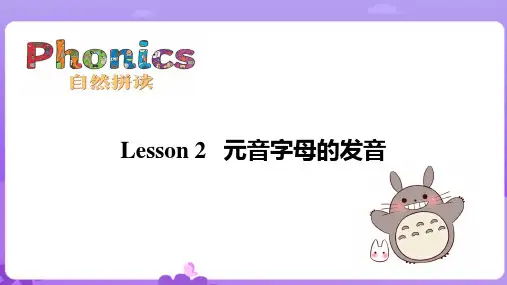
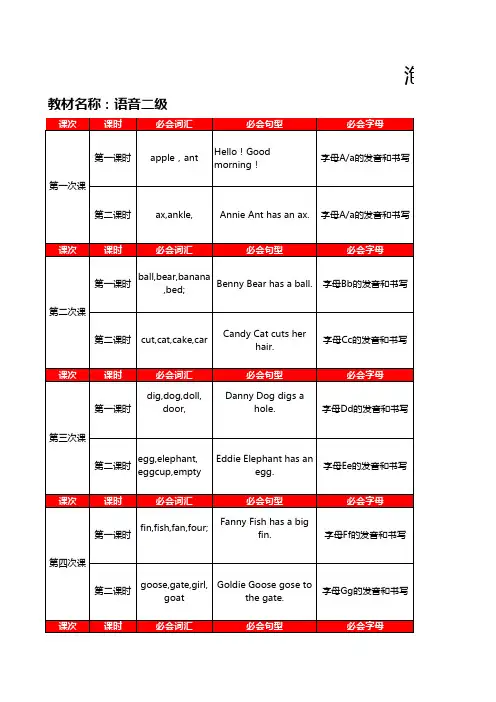



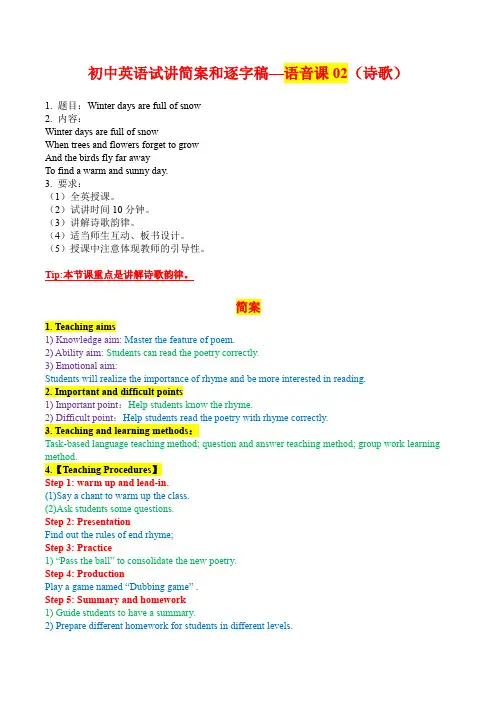
初中英语试讲简案和逐字稿—语音课02(诗歌)1. 题目:Winter days are full of snow2. 内容:Winter days are full of snowWhen trees and flowers forget to growAnd the birds fly far awayTo find a warm and sunny day.3. 要求:(1)全英授课。
(2)试讲时间10分钟。
(3)讲解诗歌韵律。
(4)适当师生互动、板书设计。
(5)授课中注意体现教师的引导性。
Tip:本节课重点是讲解诗歌韵律。
简案1. Teaching aims1) Knowledge aim: Master the feature of poem.2) Ability aim:Students can read the poetry correctly.3) Emotional aim:Students will realize the importance of rhyme and be more interested in reading.2. Important and difficult points1) Important point:Help students know the rhyme.2) Difficult point:Help students read the poetry with rhyme correctly.3. Teaching and learning methods:Task-based language teaching method; question and answer teaching method; group work learning method.4.【Teaching Procedures】Step 1: warm up and lead-in.(1)Say a chant to warm up the class.(2)Ask students some questions.Step 2: PresentationFind out the rules of end rhyme;Step 3: Practice1) “Pass the ball” to consolidate the new poetry.Step 4: ProductionPlay a game named “Dubbing game” .Step 5: Summary and homework1) Guide students to have a summary.2) Prepare different homework for students in different levels.5. Blackboard designWinter days are full of snowFeature: 1. structure: similar in length2. sound: vowelsnow, grow /əʊ/ - end rhymeaway and day, /eɪ/ - end rhyme逐字稿GreetingGood morning, dear judges. I’m number 2. Now, I will start my lesson.Warm-up【chant热身】Good morning dear students, nice to meet you. Before we start our lesson, let’s chant together and clap your hands. Please stand up, ready, go!Teacher, teacher, what can you see? I can see a bird singing in the tree.Bird, bird, what can you see? I can see a fish swimming in the sea.Fish, fish, what can you see? I can see a frog looking at me.Wow, all of you look happy now.Lead in (接近winter 或诗歌) -基础版【出示图片】At the beginning of the class, I’d like to show you a video. Please look at the screen.【提问问题】Watch it carefully and answer my question “What can you see in the video?” Do you know the answer? Some children are making a snowman. Excellent!【追问问题】Which season can we make a snowman? Great! Winter.【引出标题】Today, We are going to learn a new lesson about it, a poem about winter.(此时转身写板书)Lead in (接近winter 或诗歌) –万能版【出示图片】At the beginning of the class, I’d like to show you a video. Please look at the screen. I took it on the weekend. <自己拍的视频>【提问问题】Watch it carefully and answer my question “What can you see in the video?” Do you know the answer? There are many books in the library. I went to the library and read a book on the weekend. It's wonderful. So I bring a beautiful poem/story today.【追问问题】Do you like poem? Which poet do you like? Great! Bai Juyi【引出标题】Today, We are going to learn an English poetry, winter. (此时转身写板书)Presentation -处理文本【听录音,找主旨大意】Look, here is the poem. You should listen to the audio and tell me what’s the poem mainly about? Ready, Go!OK! What can you hear from the listening materials? Who wants to be the volunteer?Yes, Mike, you please. It tells something in winter. Well done. Do you agree? Brilliant! You all get the correct answer.Presentation -呈现语音1.【学生自己读诗歌,体会自己的韵律】Now, you should read it by yourselves, then, tell me your feeling. Ready, Go! OK, that's all for reading! How do you feel when you are reading? Yes, I heard some of you said you can't read it beautiful/fluently/standard/correctly, right? Em, I think so. (学生读不好)2.【学生听标准示范(教师、音频),体会正确发音】Now, please listen to me, then, you should tell me what's your feeling this time?Let's start! (引导学生作出对比)Winter days are full of snow. When trees and flowers forget to grow.Well, how do you feel? Yeah! It's beautiful/fluently/standard, right? (感受很好)3.【组织小组活动,探究语音规律】Why do you think it's beautiful/fluently/standard? Now, work in groups and focus on the structure, OK, let's start!(组织活动, 学生探究语音规律)Stop here, who can tell me, you can talk about the structure from the sentences, Amy, you areso brave, please. Yes, you are so smart. The length of sentences is similar. Yes, of course. Great! Who wants to make a supplement? The boy near the window, you please. You can see the last words of some neighboring sentences share the same vowel. So can you tell me what they are? Yes, snow, grow,away, day(板书). You are so careful!【教师总结:语音名称+解释+注意事项】Wonderful conclusion! / Amazing idea!Now, let's put all your views/points together. Look! This is the structure and feature of the poetry. Firstly, we can see the structure is that the length is similar, right? And then from the sound, we can see that they share the same vowel, for example,(举例)snow and grow, they share /əʊ/, away and day, they share /eɪ/.(解释)We can call them end rhyme. (名称)We can use end rhyme to make poem more beautiful in form and sound. Let’s read it together to feel the beauty. Pay attention to the pronunciation and intonation. (注意事项)Let’s start.Practice -口头练习【活动名称】OK, let’s strike while the iron is hot.(万能过渡)Now, we will play a game called “pass the ball”【活动规则】We will do it like this: I am going to pass the ball one by one, at the same time I will sing a song. When the song stops, the person who gets the ball should stand up and read the poem loudly. Understand? Let’s try it! Are you ready? Here we go!【活动过程】(唱出来一首歌或回头拍桌子......)Amy, you are so lucky. Excellent! You have a good sense of rhythm! You set a good example for us. Let’s continue. Wow, Bob. Fantastic, your pronunciation is perfect and emotional, very good. Production -成果展示【活动名称】Since we have mastered the knowledge well, let’s play the “Dubbing game”.【活动规则】I will divided you into 3 groups, group 1, 2, 3, and work in groups. We will watch the movie of a new poem. For the first time, listen to it carefully, and for the second time it will be silent. You need to choose your own character, and try to make it as interesting as you can, all right? Then we will have a dubbing competition. You should pay attention to the end rhyme .(陈述规则)Are you ready?【活动结果】Group 1, come to the stage. Excellent, you all give a wonderful performance. Your sense of rhythm is amazing! I am very proud of you. (活动反馈)Summary and homework【过度总结】Happy time goes by so fast! Who can tell me what we have learned today? OK, this girl in red, please. We have learned a poem and its rhyme. Great!【反馈卡】Now I will give each of you a reflection card as usual. You can write what you get from this lesson and what you want to say to me on it. You have 2 minutes to finish it. OK.【必做+选做】Boys and girls, class is almost over. And there is one last thing, what is it? Right, our homework! There are two choices for you. First is to finish the exercise book. Second is optional, please find a new poem which contains end rhyme on the Internet. We will share them next class. There rings the bell! See you tomorrow.。
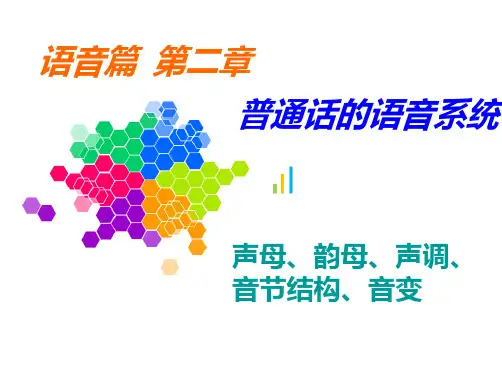
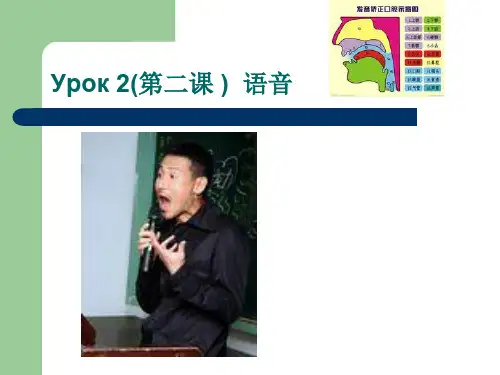
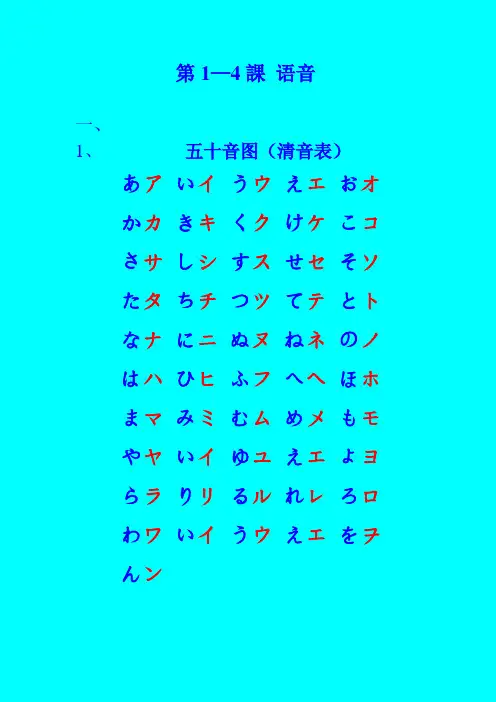
第1—4課语音一、1、五十音图(清音表)あゕいイうウえエおオかカきキくクけケこコさサしシすスせセそソたタちチつツてテとトなナにニぬヌねネのノはハひヒふフへヘほホまマみミむムめメもモやヤいイゆユえエよヨらラりリるルれレろロわワいイうウえエをヲんン2、浊音表がガぎギぐグげゲごゴざザじジずズぜゼぞゾだダぢヂづヅでデどドばバびビぶブべベぼボ*关于浊音与鼻浊音的问题:一、が行浊音发生鼻浊化:①处于词中和词尾时一般要发鼻浊音みがくえいがくがつ②助词“が”要发鼻浊音花が咲くすみませんが③在结合紧密的复合词里要发鼻浊音しょうがっこう(小学校)ちゅうがっこう(中学校)④如果后位词的词头が行音是由か行音发生浊音变化而来,则要发鼻浊音手紙(てがみ)平仮名(ひらがな)仕事(しごと)二、が行浊音不发生鼻浊化:①处于词头时不发鼻浊音外国(がいこく)義務(ぎむ)②在结合不十分紧密的复合词里,如果后位词由“が”行音开头,一般不发鼻浊音日本語学校(にほんごがっこう)世界銀行(せかいぎんこう)③数词“五”一般不发鼻浊音55(ごじゅうご)但人名和名词中的“五“除外,如:十五夜(じゅうごや)七五三(しちごさん)④同音反复的拟声词和拟态词,重复部分的“が”行音不发鼻浊音ごりごりガサガサ⑤敬语接头词后的“が”行音一般不发鼻浊音昼ご飯お元気(げんき)三、外来语中的“が”行音一般不发鼻浊音,スロ一ガン、マガジン。
但一些较早传入日语的外来词也有发鼻浊音的,イギリス、シングル四、一些接头辞位于“が”行音前时,此“が”行音一般不发鼻浊音非合理(ひごうり)超現実(ちょうげんじつ)*关于じ与ぢ:在单词中多数用“じ”,只有在发生连浊等特殊情况时才用“ぢ”,如:ちぢむ*关于ず和づ:在单词中一般情况用“ず”,只有在发生连浊等特殊情况时才用“づ”,如:小包(こづつみ)続く(つづく)3、半浊音ぱパぴピぷプぺペぽポ4、拗音きゃきゅきょしゃしゅしょちゃちゅちょにやにゅにょひゃひゅひょみゃみゅみょりゃりゅりょぎゃぎゅぎょじゃじゅじょぢゃぢゅぢょびゃびゅびょぴゃぴゅぴょ*合拗音:随着外来语在日语中比例的增大,原有的音节已不能准确地表示外来语的发音,于是,采用了一些新的拗音,成为合拗音。
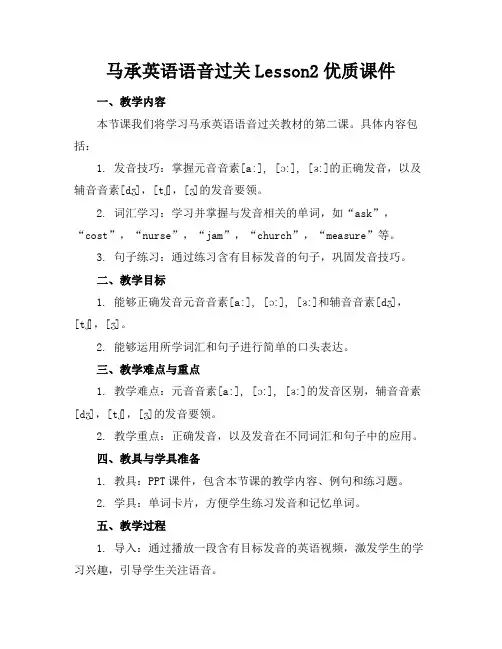
马承英语语音过关Lesson2优质课件一、教学内容本节课我们将学习马承英语语音过关教材的第二课。
具体内容包括:1. 发音技巧:掌握元音音素[a:], [ɔ:], [ɜ:]的正确发音,以及辅音音素[dʒ],[tʃ],[ʒ]的发音要领。
2. 词汇学习:学习并掌握与发音相关的单词,如“ask”,“cost”,“nurse”,“jam”,“church”,“measure”等。
3. 句子练习:通过练习含有目标发音的句子,巩固发音技巧。
二、教学目标1. 能够正确发音元音音素[a:], [ɔ:], [ɜ:]和辅音音素[dʒ],[tʃ],[ʒ]。
2. 能够运用所学词汇和句子进行简单的口头表达。
三、教学难点与重点1. 教学难点:元音音素[a:], [ɔ:], [ɜ:]的发音区别,辅音音素[dʒ],[tʃ],[ʒ]的发音要领。
2. 教学重点:正确发音,以及发音在不同词汇和句子中的应用。
四、教具与学具准备1. 教具:PPT课件,包含本节课的教学内容、例句和练习题。
2. 学具:单词卡片,方便学生练习发音和记忆单词。
五、教学过程1. 导入:通过播放一段含有目标发音的英语视频,激发学生的学习兴趣,引导学生关注语音。
2. 发音讲解:讲解元音音素[a:], [ɔ:], [ɜ:]和辅音音素[dʒ],[tʃ],[ʒ]的发音要领,并进行示范。
3. 词汇学习:展示与发音相关的单词,引导学生跟读,并进行个别指导。
4. 句子练习:给出含有目标发音的句子,让学生进行模仿和练习。
5. 随堂练习:发放练习题,让学生独立完成,检查学习效果。
六、板书设计1. 马承英语语音过关Lesson22. 内容:元音音素[a:], [ɔ:], [ɜ:]和辅音音素[dʒ],[tʃ],[ʒ]的发音要领3. 单词列表:列出本节课学习的单词,如“ask”,“cost”,“nurse”等。
4. 句子示例:给出含有目标发音的句子,供学生模仿和练习。
七、作业设计1. 作业题目:2. 答案:见附件。

Урок 2I.元音字母и, э, ы1.语音学习[и] : 发音时,嘴唇向两边舒展,舌头中部向上抬起,与汉字“一”的发音基本相同。
и-и-и[э]:发音时,舌头前移,舌中部抬起,舌尖抵下齿背,唇角向两边稍咧,双唇不能用力。
э-э-э[ы] : 发音时,舌头稍向后缩,同时舌头后部抬起,嘴唇向两边舒展。
不可误读为汉语拼音ei 。
Мы ≠妹meiы-ы-ы2.语音练习а-о-у-иа-у-о-э о-у-а-ыо-ы-э-ау-а-и-э и-им и-ин э-эм э-эны-ым ы-ыни- ни -ми э-нэ-мэ ы-ны-мы3.字母书写练习II.辅音字母п, б1.语音学习[п - б]:[п - б]是相对应的清浊辅音,二者发音的部位相同。
发音时,双唇紧闭,气流冲开上下嘴唇的阻塞而成音。
发[п]时声带不振动,发[б]时,声带振动。
п –п –п б –б –б2.语音练习па-по-пу па-ап-папба-бо-бу бо –об –бубпи –би пы –бы пэ - бэ3.字母书写练习III.音节、重音1.音节:俄语单词可划分为音节。
音节的中心是元音。
一个元音可以单独构成音节,也可以和一个辅音或几个辅音一起构成音节。
辅音是音节的组成部分,不能自成音节。
只有一个音节的词,称单音节词,例如:а,он,дом由两个音节构成的词,称双音节词,例如:до-ма,па-па,о-на,由多个音节以上构成的词,称多音节词。
例如:по-то-му(因此),по-это-му(所以)2.重音:由两个或两个音节以上组成的词,其中有一个音节的元音读得重些、长些,而且音质清晰,这就是重音。
被强调的音节,称作重读音节。
词中其他元音则相对地读得弱而短。
书面上表示重音时,将「′」记号标在重读音节且为元音字母之上,如:мама,она。
词内含有元音字母ё时,因重音一定落在ё上,故而不再标重音符号。
现代大学英语语音教程(第二版)引言《现代大学英语语音教程(第二版)》是一本为大学生设计的英语语音教材。
本教材综合了语音学的理论和实践,通过系统的课程和练习,旨在帮助学生提高英语语音技能和流利程度。
课程概述本教材包含10个主题单元,涵盖了英语发音的基础知识和技能。
每个单元都包括教学目标、教学内容、教学方法和练习题。
学生将通过理论学习、实践训练以及课堂互动来提升他们的语音技巧。
教学目标•通过本教材学习,学生将掌握英语语音的基本知识和技能。
•学生将能够正确地发音并准确表达英语单词和句子。
•学生将提高他们的语音认知和听力理解能力。
教学内容1.英语语音的基本概念和分类2.元音和辅音的发音规则和特点3.连读、重音和节奏的应用4.语音变化和语调的表达5.口语练习和模仿教学方法•讲授理论知识:教师将通过讲解和演示的方式介绍英语语音的基本概念和分类,以及发音规则和技巧。
•实践训练:学生将通过个人和小组练习来巩固所学的语音知识和技能,包括口语练习和模仿。
•课堂互动:教师将鼓励学生积极参与课堂讨论和活动,以提高他们的语音认知和听力理解能力。
练习题样例1.下列单词中,哪一个音标代表的是元音?a./p/b./i/c./t/d./n/2.请根据拼写给出的单词,选择正确的发音。
ughb.toughc.schoold.thought总结《现代大学英语语音教程(第二版)》是一本全面介绍英语语音的教材,通过理论讲授和实践训练,帮助学生掌握英语语音的基础知识和技能。
同时,通过课堂互动和练习题,提高学生的语音认知和听力理解能力。
这本教材将成为学生在大学英语学习中的重要辅助教材,为他们打下坚实的语音基础。
2020职称俄语基础语音辅导教程最有趣的俄语故事第
二课
1.Завтра ещё принесу
—Ну, сынок, покажи дневник. Что ты сегодня принёс нз шкалы?
—Да нечего показывать, там
всего одна двойка.
—Всего одна?
—Не волнуйся, папа, я завтра ешё принесу.
我明天还能拿回来呢
“哦,儿子,吧成绩册拿来看看。
你今天从学校带回来什么成绩?”
“没什么可看的,那上面总共就一个2分。
”
“总共就一个2分?”
“别担心,爸爸,我明天还能拿回来呢!”
重点词语:
принести что откуда 从...带回...
показывать (кого-что кому-чему) 把...给...看;出示;体现
двойка(五分制的)二分
получить двойку по математике 数学考试得二分
【注】俄罗斯考试制度为五分制,二分为不及格。
2.Рыбы
Урок химии:
—Скажи-ка, Вовочка, какие
вещества не растворяются в воде?
Вовочка не раздумывая:
—Рыбы!
鱼
化学课上。
老师问:“沃沃奇卡,你来说说哪些物质不溶于水?”
沃沃奇卡不假思索地说:“鱼!”
重点词语:
вешество 物质;实体
растворяться 溶合;溶解
раздумывать 思索;周密考虑。